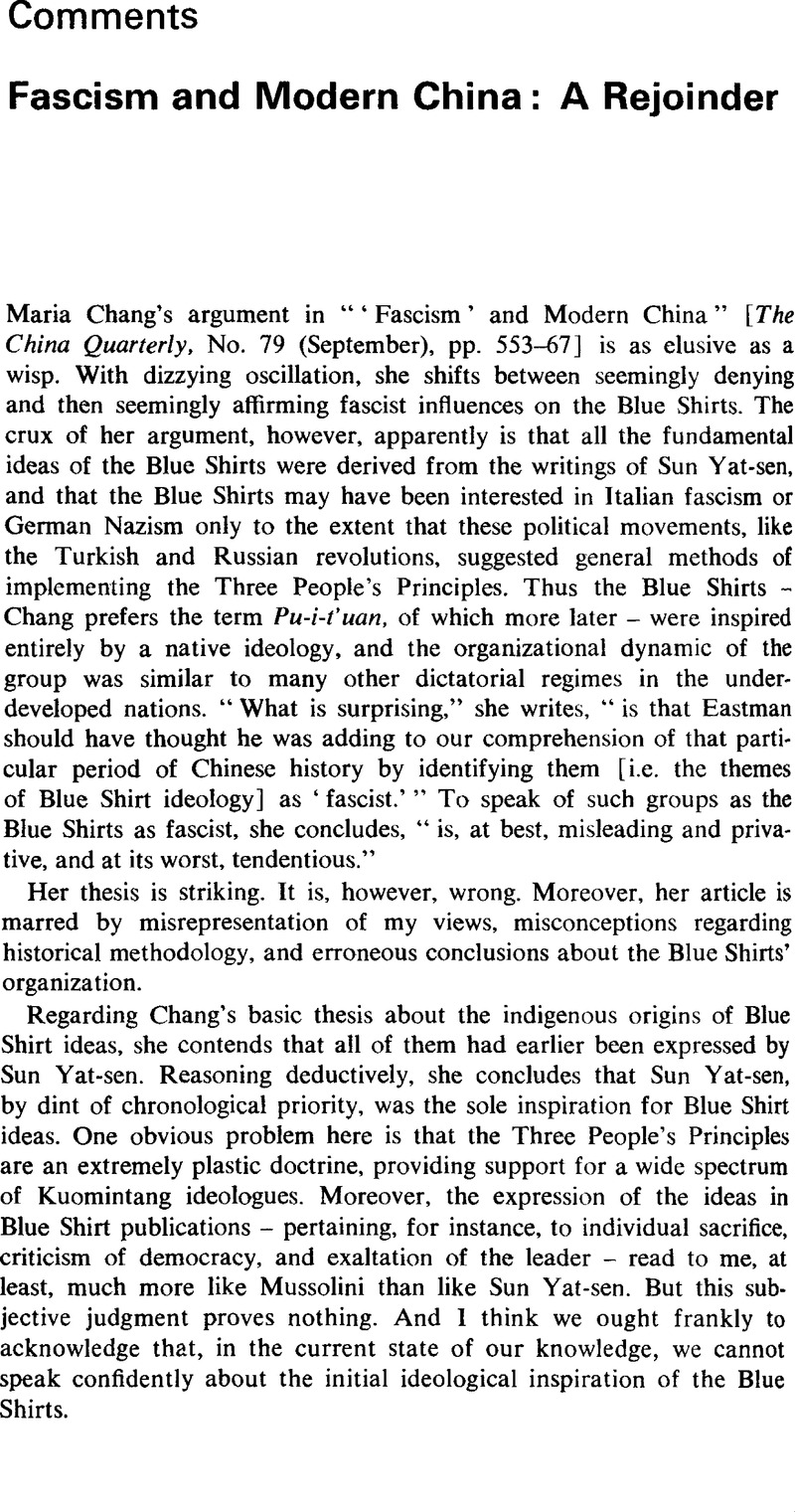Article contents
Fascism and Modern China: A Rejoinder
Published online by Cambridge University Press: 17 February 2009
Abstract

- Type
- Comments
- Information
- Copyright
- Copyright © The China Quarterly 1979
References
1. Wo-men te hsün-lien (n.p., 1936), pp. 23–31. I am indebted to Dr Marvin Williamson for informing me of this important and rare work.
2. Chang also maintains that racism was an essential ingredient of fascism, and that, because the Blue Shirts did not propound concepts of racial superiority, it is ludicrous to suggest that they were fascist. Significantly, however, Mussolini rejected race as a defining characteristic of the state and nation, adding that “Race; it is an emotion, not a reality; 95% of it is emotion.” Oakeshott, Michael (ed.), The Social and Political Doctrines of Contemporary Europe (Cambridge: Cambridge University Press, 1939), p. 167Google Scholar.
3. Ibid. p. 175.
4. The name Blue Shirts is used largely for convenience sake. In The Abortive Revolution, I described the organization and its several names in some detail. The description there, in all but a couple of small details, is fully corroborated in Wo-men te hsün-lien, pp. 39–41; and Wen-i, Teng, Mao-hsien fan-nan chi (A Record of Braving Dangers and Withstanding Difficulties) (Taipei: Tai-wan hsüeh-sheng shu-chü, 1973), Vol. IGoogle Scholar: 148. Professor Winston Hsieh kindly directed my attention to Teng's memoir.
- 3
- Cited by




